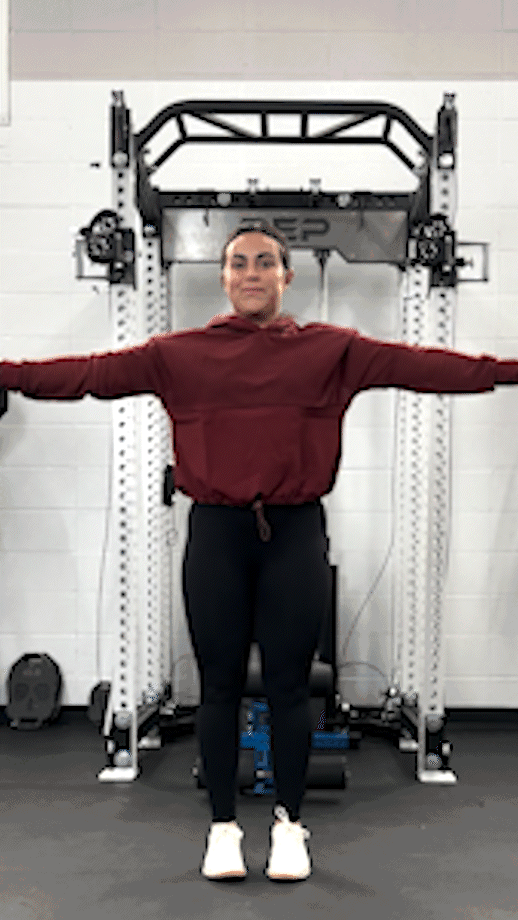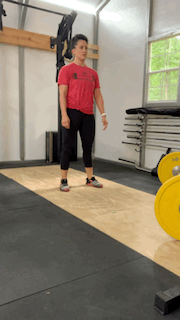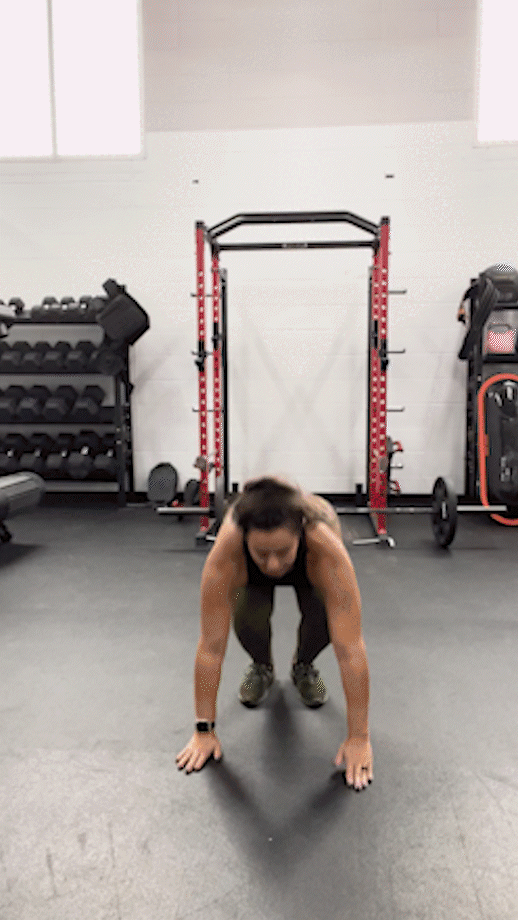We test and review fitness products based on an independent, multi-point methodology. If you use our links to purchase something, we may earn a commission. Read our disclosures.
If you want to get the most out of your workout in the shortest time, consider exploring Tabata-style training. This style of workout is great for those who are short on time, people who want to push their fitness levels further, or those looking to add high-intensity training to their at-home workouts..
In this article, I’ll share Tabata’s full-body workout benefits by presenting you with an intense Tabata cardio workout requiring no equipment or personal trainers and easily done from the comfort of your home.
How Does Tabata Work?
Tabata is a rigidly structured HIIT exercise routine originating in Japan. While the name stands out, it simply refers to its founder, Dr. Izumi Tabata. However, Dr. Tabata notably credits Koichi Irisawa, a Japanese speed-skating coach in the 1980s, for its creation.
Credit aside, Tabata has gained popularity due to its sheer efficiency. Furthermore, through various studies1, Dr. Izumi Tabata has established that Tabata’s design and structure can be considered one of the most effective training methods for athletes to enhance their performance, build aerobic capacity, and push what may have once been considered their limits.
Tabata is a form of high-intensity interval training, but not all HIIT is Tabata. Tabata protocol is defined by structured, timed, four-minute rounds rather than reps. Each round consists of eight intense anaerobic exercise intervals at 20 seconds of work with 10 seconds of rest in between.
With each 20-second exercise interval, you are exerting a 9- or 10-out-of-10 in intensity, and the breaks are 10 seconds. This is not “give or take 10 seconds”; the breaks are 10 seconds! When that break ends, you should be positioned for your next intense interval, so breaks should be seen as part catching your breath and part resetting yourself to jump back into the workout.
Tabata demands that you find the strength in yourself to reach your peak performance throughout every 20-second interval, regardless of stress or fatigue. There are a number of benefits of Tabata, including getting a great workout in a short time, it boosts your endurance, metabolism, gets your heart rate elevated, and helps you discover a new level of fitness feat.
RELATED: Tabata Timer
Try This: Full-Body Tabata Workout At Home
Tabata Timer
For each round, conduct each exercise for 20 seconds at full intensity, with a strict 10-second break in between. The round should consist of eight full-intensity intervals with eight 10-second recovery periods.
Rest for one to two minutes between rounds; remember with Tabata, the shorter the rest, the better the workout.
Both beginners and advanced athletes can do the workout. However, while the timer and structure are intended to be precise, you must independently determine the intensity that best matches your current fitness state when engaging in the workout. In addition, it is up to you to calculate the safest and healthiest goal to aim for when pushing your limits.
I suggest some dynamic stretching or a warm-up exercise to prepare yourself for this workout in advance. Furthermore, while uncompromising intensity is the goal, ensure you are not compromising balance and technique in the process, as this could lead to accidents like falling over or strained joints. Lastly, stop immediately if you feel you are having faint-like symptoms.
Lastly, keep in mind that you can substitute any of these movements with other bodyweight exercises like lunges or jump rope, or incorporate dumbbells and kettlebells for weighted movements. Adjust to your level of fitness.

First Tabata: Tuck Jumps and Jump Squats
Engage in each exercise four times at 20 seconds a piece, with a 10-second break in between. A round is four minutes (240 seconds) with eight high-intensity interval sets and eight breaks.
4 Rounds:
- 20 seconds tuck jumps
- 10 seconds rest
- 20 seconds jump squats
- 10 seconds rest
Tuck Jumps
How to do it:
- Begin by standing on the balls of your feet, then spring upwards with full intensity, aiming to bring your knees to your chest.
- When coming down, land on the balls of your feet. As soon as you land, immediately spring upwards again.
- Make sure to land on the balls of your feet to avoid stressing your knees. Also, try to engage your core and do your best to keep your back straight when bringing your knees upward. Try and resemble a spring motion, where your feet barely touch the floor before jumping upwards again.

Jump Squats
How to do it:
- Begin in a low-squat position.
- Raise yourself out of a lowered-squat position by using enough momentum to jump off the ground. Aim to reach an elevated point where your toes can face the ground.
- Delicately land on the balls of your feet while coming back downward into a lowered-squat position, then repeat. Make sure you land on the balls of your feet to keep the exercise low-impact and avoid stressing your knees with your body weight. Also, remember to try and keep your back straight and the movement fluid as you go up and down!

Second Tabata: High Knee Sprints and Burpees
Engage in each exercise four times at 20 seconds a piece, with a 10-second break in between. A round is four minutes (240 seconds) with eight high-intensity interval sets and eight breaks.
4 Rounds:
- 20 seconds high knees
- 10 seconds rest
- 20 seconds burpees
- 10 seconds rest
High Knee Sprints
How to do it:
- Begin sprinting in place, aiming to bring your knees above your waist.
- Explosively alternate your sprints while aiming to bring your knees as safely high as possible.
- Use your arms to help with momentum, land on the balls of your feet, and remember to keep alert of your balance.
Burpees
How to do it:
- Jump and raise your hands above your head. Aim for a height where your toes are pointing to the ground.
- When you land, kick your legs back as you fall forward, ending up in an up-plank position.
- Once in the up-plank, immediately bring your legs forward while bringing yourself back upward to your original squatted position.
- Make sure you remain light on your feet and fluid as you move up and down. You can engage in a push-up when in the up-plank position to add an additional strength training element to the exercise.

Third Tabata: Walkout Push-Ups and Mountain Climbers
Engage in each exercise four times at 20 seconds a piece, with a 10-second break in between. A round is four minutes (240 seconds) with eight high-intensity interval sets and eight breaks.
4 Rounds:
- 20 seconds walkout push-ups
- 10 seconds rest
- 20 seconds mountain climbers
- 10 seconds rest
Walkout Push-Ups
How to do it:
- Begin by standing with your feet shoulder-width apart and arms to your sides.
- While keeping your feet in place, bring yourself down to the ground, landing on your hands. Then, walk yourself out to an up–plank position using your hands.
- After landing in the up-plank position, engage in a push-up. Then using your hands, walk yourself back, standing upwards after getting your hands as close to your feet as possible.
- Try to be as quick as possible and keep your feet in place when crawling. Also, be mindful of your back when standing up.
Mountain Climbers
How to do it:
- Get in an up-plank position.
- Once established in the up-plank, begin explosively bringing each knee to your chest alternatingly. As soon as one foot touches the ground, the other should move instantly.
- Do your best to keep your butt down and up-plank technique intact while engaging in mountain climbers. Beyond the cardio intensity, your core and shoulders should also feel a burn.

Fourth Tabata: Jumping Jacks and Tuck Jump Burpees with a Push-Up
Engage in each exercise four times at 20 seconds a piece, with a 10-second break in between. A round is four minutes (240 seconds) with eight high-intensity interval sets and eight breaks.
4 Rounds:
- 20 seconds jumping jacks
- 10 seconds rest
- 20 seconds tuck jump burpees with a push-up
- 10 seconds rest
Jumping Jacks
How to do it:
- Stand with your feet hip-width apart and arms to your side.
- Raise your arms from your sides above your head in an arch-like motion while simultaneously kicking your feet outward. When fully extended in the jack, you should resemble a wishbone.
- After engaging in the jack, return to your original position while remaining on the balls of your feet, then repeat.

Tuck Jump Burpees with a Push-Up
How to do it:
- Jump upwards, bringing your knees to your chest.
- When landing on the balls of your feet, immediately drop down and kick your legs back as you fall forward, ending up in an up-plank position, then engage in a push-up.
- After the push-up, immediately bring your legs forward while pushing yourself explosively back upwards with enough momentum to engage in a tuck jump, then repeat.
- This is by far the hardest of all the exercises I included. With this exercise, it is essential to remain fluid and light on your feet, and it may be helpful to experiment with this exercise before jumping right into it.
Tabata Cardio Workout: Q&A
Is Tabata cardio or HIIT?
Both! Tabata is a form of a HIIT cardio workout defined by its specific timed structure. While Tabata training tends to include shorter breaks with higher-intensity intervals than many other HIIT workouts, it is still inherently a form of HIIT
Is Tabata cardio good for weight loss?
Tabata is a great workout routine for weight loss. Tabata burns calories in a shorter time while boosting your metabolism. Furthermore, as cited in this 2010 study2, many individuals use time as a reason they can not engage in exercise. While this study also demonstrates proven results in weight loss from Tabata or other HIIT-oriented training such as HIIT rowing or biking. It is further evidence as to why the benefits of Tabata should appeal to those interested in weight loss who use time as an excuse not to exercise.
Is Tabata better than HIIT?
Tabata is not better than HIIT; it is a type of HIIT. However, Tabata’s ruthless demand for intensity and incredibly short resting periods may make it harder than some other HIIT routines, yet, this is circumstantial.
Is 20-minute Tabata effective?
A 20-minute Tabata workout is absolutely effective! However, the exercises performed during your Tabata routine determine its intensity and difficulty level. Yet, considering the intensity involved in a single four-minute Tabata-style round, twenty minutes should definitely help you break a sweat, to say the least!
References
- Tabata, I. Tabata training: one of the most energetically effective high-intensity intermittent training methods. J Physiol Sci 69, 559–572 (2019). https://doi.org/10.1007/s12576-019-00676-7
- Boucher, S. High-Intensity Intermittent Exercise and Fat Loss. J Obes. 2011; 2011: 868305. Published online 2010 Nov 24. doi: 10.1155/2011/868305
Further reading

It’s hard to believe a simple belt provides so much upside during heavy lifting. Let’s explore how weightlifting belts work, and when to use a lifting belt, too. Read more

Our FightCamp review looks at this kickboxing-inspired smart home gym system that’s fun and engaging for people of all fitness levels. Read more

Looking for a Hydrow discount code? You’re in luck! The team at Garage Gym Reviews is here to assist with available coupons and discounts to help you save money. Read more

In our ProForm 505 CST Treadmill review, we take a look at the specs of this now-discontinued treadmill. Read more

